The Brides of Dracula (1960)
Directed by: Terence Fisher
Written by: Edward Percy, Jimmy Sangster, Peter Bryan
Starring: David Peel, Freda Jackson, Peter Cushing, Yvonne Monlaur
UK
AVAILABLE ON DVD AND BLU-RAY
RUNNING TIME: 85 min
REVIEWED BY: Dr Lenera, Official HCF Critic
Schoolteacher Marianne Danielle, en route to take up a position in Transylvania, is abandoned at a village inn by her coach driver. Ignoring the warnings of the locals, she accepts the offer of Baroness Meinster to spend the night at her castle. There, she meets his son, who is supposedly insane and is therefore confined and chained up. Stealing the key to his chain from the Baroness’ bedroom, Marianne frees him, but he’s really a vampire and bites his mother. Marianne flees into the night and is found, exhausted, by Dr. Van Helsing the following morning. He escorts her to the school where she’s to be employed, then goes off to investigate and finds a funeral in progress, a local girl having been found with her neck bitten….
Though my memory is a little vague on the subject, The Brides Of Dracula was one of the last of the Hammer Dracula films [I know, it’s not really a Dracula film, but is still linked with that series as it clearly takes place just after Dracula and concerns the further adventures of Peter Cushing’s Van Helsing] that I got around to seeing. It didn’t used to be shown on TV as often as most of the others, and had therefore built up a small amount of mystique in my mind, something also due to it being regarded as being better than all of Lee’s Dracula pictures in some books. I was actually let down when I finally saw it. Used to Christopher Lee, David Peel’s lead vampire came across as comical to me, and the rather stately pace didn’t help, but most disappointing was that a book called The Dead That Walk [Leslie Halliwell] had described some exciting stuff in the movie that didn’t actually exist, leading me to wonder for some time if the TV version was cut. Now of course, I can really appreciate it for what it is, one of Hammer’s most sumptuous looking and carefully made films, though it’s still flawed by some notable script deficiencies [though of course a horror film can often accommodate these better than most other types of movie] and a rushed ending, which means that for me it’s not quite on the same level as Dracula overall, while it also lacks that film’s tremendous pace. As an example of the sheer class and style that Hammer could achieve with so little though, it does take some beating.
A sequel to Dracula was first planned early 1959 and Jimmy Sangster was asked to script Disciple Of Dracula. It had two female protagonists rather than one, the hero was a traveller called Latour, and Dracula’s spirit was summoned at the end to kill Meinster. A few months later Hammer planned a film called Dracula The Damned, but sources vary as to whether it was actually intended to feature Lee as Dracula or not. The second full script by Peter Bryan merged the two main women, replaced Latour with Van Helsing, and had the latter summoning bats as the climax, the latter possibly being due to Lee turning down the role of Dracula even as a cameo, though again some say he wasn’t even asked. Producer Anthony Hinds, noting the outcry that met the release of Peeping Tom, rewrote the script, now called The Brides Of Dracula, to tone down its stronger elements. Though details are unclear, I reckon that, for example, you would have seen Meinster bite his mother, while the bat climax was nixed, either due to Cushing rejecting it or it being too expensive [though it turned up three years later in The Kiss Of The Vampire]. Then Cushing himself got theatre writer Edward Percy to polish his dialogue, and all this rewriting unsurprisingly meant that it was doubtful that the film would meet its release date, so Hinds deleted some scenes just before filming begun, while director Terence Fisher made his own alterations to the script on the set just prior to shooting some scenes. Shorn only of a second-long shot of a staking, a cut which appeared in most versions until 2004, The Brides Of Dracula not only – very surprisingly – turned out well, but was a major hit for Hammer too.
A narrator ominously tells us that the story is taking place soon after Dracula’s death before an archetypal opening of a carriage hurtling through a wood [and there’s Michael Ripper already, as the driver!]. The wood is, of course, Black Park in Buckinghamshire, and it would soon become more and more familiar in Hammer’s films, especially as they tended to shoot scenes in the same areas. The coach contains our heroine, Marianne, who soon arrives at the [rather familiar] village square set, but has her carriage nicked by, I think we are supposed to work out, a mysterious man in black who’s never seen from again and who has presumably been paid by the Baroness to take her luggage to the castle. However, after having told the Baroness that it was stolen, Marianne doesn’t even bat an eye lid when she finds it safely installed in her room in the castle, though that script hole isn’t nearly as big as the Baroness’s son being supposedly kept prisoner by a chain even though we later find out he can turn into a bat, despite the latter being something that Van Helsing dismissed as “a common fallacy” in Dracula when talking about vampires. Small wonder then thatV an Helsing seems really thrown when he’s attacked by a bat [not very realistic looking, but this was because lots of effort went into making a good model bat which then got lost and had to be replaced on short notice]; it must have surprised him tremendously!
Anyway, never mind, the first section of The Brides Of Dracula, [much of it set in a rather familiar large room, whose table I would swear is the one that Van Helsing leapt across in his previous film] proceeds with gloriously hammy performances from Freda Jackson and Martita Hunt as Gerta the maid and the Countess respectively, fine atmosphere helped especially by the sound of thunder constantly booming away in the background, and even a romantic element as Marianne is drawn to this sad man who is virtually abused by his mother. Of course, once freed, he vampirises his mother, then Marianne, though she doesn’t see that deed, flees in panic and eventually collapses, then after reviving, takes up her post at the school she’s supposed to teach at. Despite nice comic turns from Henry Oscar as a pompous schoolmaster, Mona Washbourne as his giggly wife who listens at the door when Meinster and Marianne are alone, and, above all, the inimitable Miles Malleson as a sceptical country doctor who takes a potpourri of medicines so his patients “don’t have to”, the middle section of the film does drag just a bit too much when it should be building a bit more suspense, meaning that once vampirism begins to spread, the film rushes somewhat to its conclusion, which itself seems slightly rushed and awkward. Van Helsing’s and Meinster’s fight to the finish in a windmill is very exciting though, and we even get to see the latter bite the former, who has to burn out the bite [superbly acted by Cushing, this bit], but the two girl vampires just seem to lurk in the background, and, while having Meinster vanquished by the cross-like shadow of the windmill’s sails is quite original, it’s hard to believe that he’d never previously experienced the shadow of two sticks crossing!
My favourite moment in the film is when Greta coaxes a vampire girl out of her grave – it’s creepy and slightly touching, though Meinster’s first appearance to Marianne in the school also contains a chill, she looking at herself in the mirror, the camera then panning back to reveal Meinster as she turns round. The odd love story aspect to this one is interesting [Marianne is courted by Meinster throughout and falls genuinely in love with him, only learning of his true nature near the end], as well as looking forward to the far inferior Lust For A Vampire along with the girl’s school setting and just a touch of lesbianism [progressive Hammer] when Marianne’s friend comes back from the grave to visit her. Along with a whiff of incest and homosexuality in other vampiric moments, The Brides Of Dracula takes the subject just a little bit further though, one staking aside, is almost devoid of bloodshed. Much more time is taken up with gradually building up to big moments, which is fine most of the time because one can more easily appreciate the simply stunning set design by Bernard Robinson and cinematography by Jack Asher, this film possibly being their greatest achievement, with shot after shot meticulously composed and a perfect synthesis of the two skills. The general colour palette seems to be red [appropriately], gold, and purple, the latter especially instrumental in making the film such a visual treat, with even background sky looking purple towards the end, and taking The Brides Of Dracula closer than any other Hammer film to the visual brilliance of Mario Bava. Of course this isn’t trying to take anything away from Fisher’s careful, yet confident, direction.
Aside from one fight/chase scene [possibly intended to echo the finale of Dracula] around half way through the film which is almost laughably theatrical, Cushing is typically excellent as Van Helsing, projecting a great mix of slightly unhealthy obsession [remember, this is a guy who hammers stakes into people for a living], steely determination and fatherly compassion. With his boyish looks, blonde hair and short height, David Peel is appealingly different from Lee, but to be honest isn’t too great an actor and, while given more dialogue than Lee would ever have as Dracula, often comes across like he’s having a hissy fit more than anything else, though he’s good in the scenes when he’s supposed to be charming and vulnerable. Yvonne Monlaur [who almost played the part of Domino in Thunderball] has considerable charm as the female lead in a film which is also well acted in nearly every role, no matter how small. Then there’s Malcolm ‘Master of the Queen’s Music’ Williamson’s jagged, often Bartok-like score. While it lacks the easy-to-remember musical hooks that James Bernard would provide, it’s still a tremendous sympathy of menace, discord and, occasionally, very dark beauty, such as in the theme for Marianne and Meinster. Perhaps one of those Hammer films that one needs to be a little older to fully appreciate, The Brides Of Dracula may have its script and pace issues, but in a way they almost add to its dreamlike feel. The film is overall another shining example of the tremendous craftmanship that Hammer could bring to their cheap and cheerful horror films, plus possibly the studio’s best looking film ever.
Rating: 










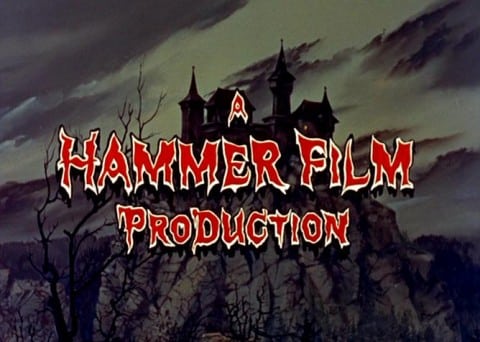
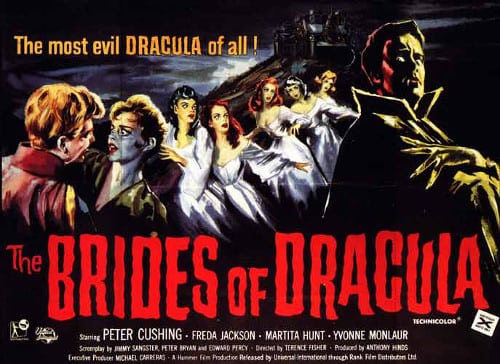
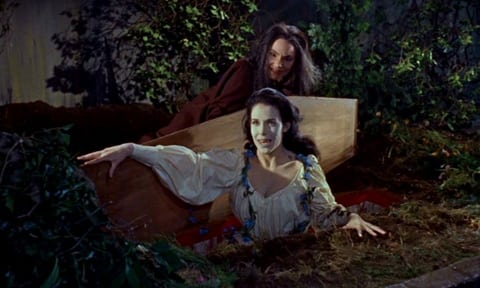


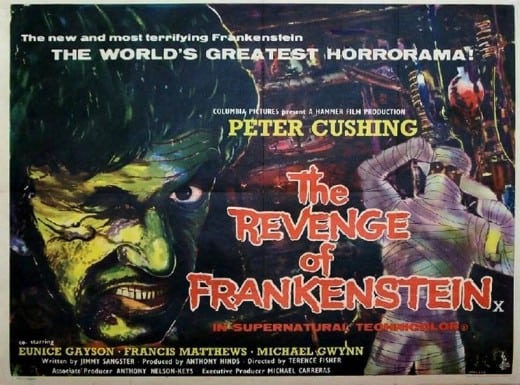
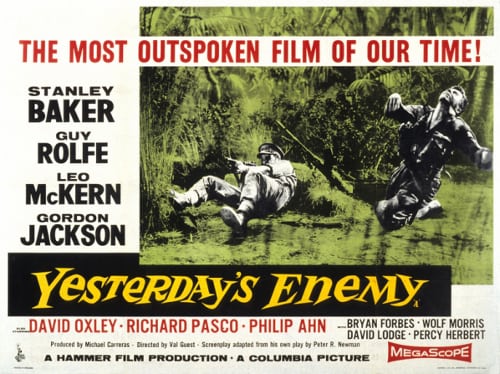
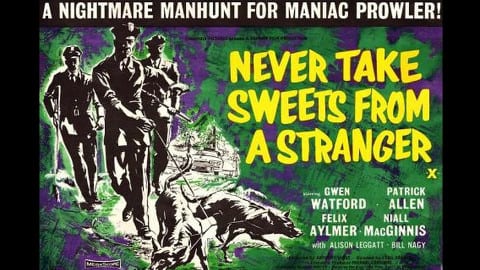
Bride of Dracula is a very nice concept.
i think can make a big series(queen of vampires)with that concept.